Blockchain and BIM data can streamline workflows and safeguard information, but you may be questioning the practicality and implications of such an integration
In the world of construction, the permanence of concrete stands in stark contrast to the fluidity of data, yet you’re tasked with marrying the two to keep your projects on the cutting edge. This discussion will navigate the complexities of implementing blockchain and BIM, offering you insights into how this technology can enhance data integrity, reduce disputes, and increase transparency throughout the lifecycle of a construction project.
Exploring blockchain and BIM integration
The integration of blockchain and BIM marks a pivotal advancement in ensuring data integrity and transparency within construction projects. By fusing these technologies, you’re not just dealing with static blueprints; you’re engaging with a dynamic database where every change is logged, every transaction is transparent, and every stakeholder can trust the data presented.
Data integrity is at the heart of this integration. With BIM, you’re likely familiar with the complex layers of information that need to be accurate and up-to-date. Now, imagine if each piece of data came with an immutable history, thanks to blockchain. You’d have an audit trail for every component, providing you with confidence in the data’s provenance and reducing the risk of costly mistakes.
Interoperability challenges have long plagued the construction industry, with various systems and formats struggling to communicate. Blockchain acts as a unifying layer, introducing trust mechanisms where previously there was skepticism. By establishing a common ground for data exchange, it’s easier to collaborate across different platforms and disciplines, streamlining your project’s workflow.
Smart contracts are another game-changer. These self-executing contracts with the terms directly written into code can automate payments, approvals, and compliance checks, efficiently enforcing agreements without the need for intermediaries. This isn’t just about efficiency; it’s about creating a framework where accountability is built into the system.
Enhancing collaboration using blockchain
By harnessing blockchain technology, you can significantly bolster collaboration among stakeholders in construction projects, ensuring transparency and trust in shared data. This innovative approach introduces several key benefits to your project delivery process:
- Collaboration incentives: By creating a system where contributions to the Building Information Modeling (BIM) data are immutably recorded and rewarded, you’re encouraging a culture of active participation. This peer-to-peer network environment can enhance the motivation of all parties to share their expertise and updates promptly.
- Data integrity: Blockchain’s inherent characteristics ensure that once data is entered into the ledger, it cannot be altered without consensus. This means that you can trust the BIM data you’re working with to be accurate and up-to-date, reducing the risk of costly errors and rework.
- Trust levels: The ability to apply varying trust levels to different data sets or users can be a game-changer. You’ll have the flexibility to restrict sensitive information to authorized personnel while still promoting transparency where it’s needed.
In your role, understanding the nuances of secure sharing is critical. Blockchain provides a platform where data can be shared securely among stakeholders, without the fear of tampering or unauthorized access. The ledger acts as a single source of truth, greatly reducing disputes and misunderstandings that can delay project timelines.
Blockchain data provenance in BIM
Incorporating blockchain and BIM processes ensures that every data transaction, from creation through to final approval, is transparently and securely documented, providing a robust provenance trail that stakeholders can rely on. This means you’re looking at a system where data integrity isn’t just a buzzword but a tangible reality. By recording each change, addition, or deletion within the blockchain, the accuracy and consistency of BIM data are maintained throughout the lifecycle of a construction project.
The traceability benefits of this integration are immense. You’ll not only see who made changes but also understand the full history of those changes. That’s provenance tracking at its finest. With such transparency, disputes can be resolved more efficiently, and decision-making can become more informed. This transparency instills a greater sense of accountability among team members, knowing that their contributions are permanently recorded.
Security measures are intrinsically woven into the blockchain’s fabric. Each block is linked to the one before and after it, creating an immutable chain that is virtually tamper-proof. This deters fraudulent activities and ensures that BIM data remains unaltered unless consensus is reached among relevant parties.
Costs and benefits analysis
You’re likely weighing whether the financial investment will pay off in terms of efficiency and risk management. Let’s break it down.
When you’re exploring efficiency, incorporating blockchain and BIM can streamline workflows and reduce the time spent on data management and verification. This means you’ll be spending less time on administrative tasks and more on the actual construction. But remember, there’s an initial cost to setting up a blockchain system, and it’ll require ongoing maintenance.
Cost optimization is another key factor. Blockchain can help you track resources and materials more accurately, potentially reducing waste and lowering costs. Over time, these savings can be significant, but you’ll need to consider the upfront expenditure for the tech and training your team to use it properly.
It’s a balance of costs versus long-term gains, and the potential for a more efficient, optimized, and engaged project lifecycle is hard to ignore.
Future of construction project management
As you navigate this new landscape, you’ll appreciate the robust data security that comes with blockchain. No longer will sensitive information be as vulnerable to hacking or corruption. The industry transformation is inevitable, with blockchain and BIM steering construction project management towards unprecedented heights of technological sophistication. Embrace this change, for it’s not just a passing trend, but the foundation of tomorrow’s construction industry successes.

